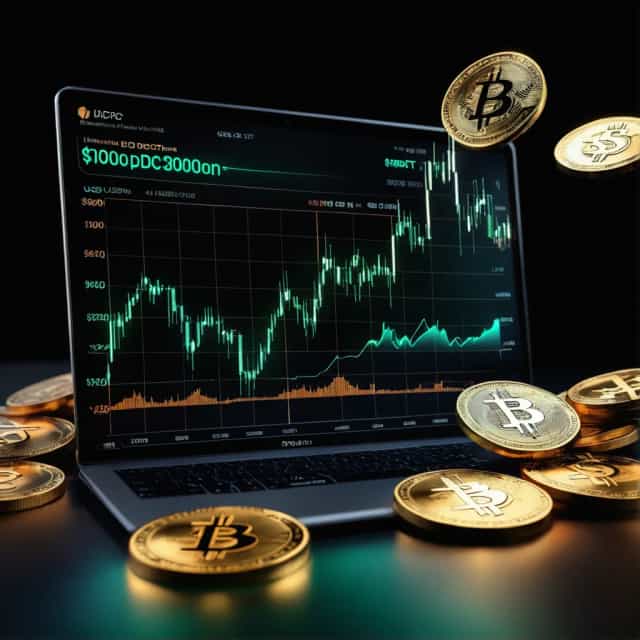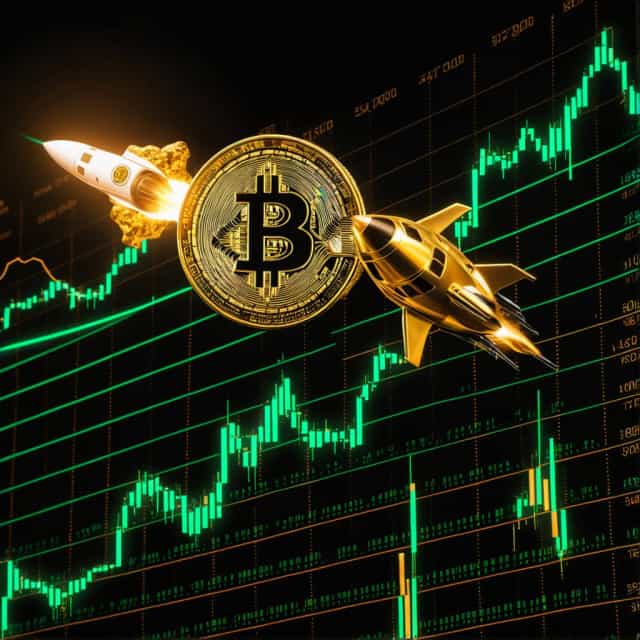
출처: Block Media
The Post-Pandemic Asset Boom: Is It Real Wealth? Luke Gromen and the 'Debasement Trade'
The economic surge in asset markets following the COVID-19 pandemic has sparked deep discussions about whether this phenomenon represents true wealth creation or a distorted perception fueled by currency devaluation. Luke Gromen, founder and CEO of independent research firm Forest for the Trees (FFTT), has brought a unique perspective to this debate. On October 3, Gromen introduced the concept of the "Debasement Trade," emphasizing the critical role of fiat currency valuation in evaluating asset performance.
According to Gromen, ignoring the impact of monetary debasement—the reduction in the purchasing power of fiat currencies—can lead to fundamentally flawed interpretations of asset market trends and returns.
Post-Pandemic Asset Growth: A Reassessment
Traditional asset classes have experienced what, on the surface, appears to be a robust bull market since the pandemic began. Measured in U.S. dollars (USD), the performance of major asset categories has been remarkable:
- Nasdaq: +165%
- S&P 500: +102%
- U.S. housing prices: +56%
In nominal terms, these figures suggest widespread wealth creation and strong asset market performance. However, recalibrating these returns by using alternative benchmarks such as gold or Bitcoin (BTC) reveals a contrasting reality.
-
In Gold Terms:
-
Nasdaq: +7%
-
S&P 500: -18%
-
Housing Prices: -37%
-
In Bitcoin Terms:
-
Nasdaq: -78%
-
S&P 500: -84%
-
Housing Prices: -87%
These disparities demonstrate that asset performance, when assessed through these alternative lenses, tells a vastly different story—one largely defined by shifts in the purchasing power of the underlying measurement currency. Gromen explains, "If you disregard debasement—where fiat currencies like the dollar lose purchasing power due to increased issuance—you risk misinterpreting asset returns entirely."
What is the 'Debasement Trade'?
The "Debasement Trade" represents an investment strategy rooted in the understanding that fiat currencies are systematically losing purchasing power over time. This decline is driven by macroeconomic policies, including aggressive monetary expansion by central banks and significant fiscal stimulus by governments.
The goal of the debasement trade is not merely to achieve nominal asset gains but to preserve the real value of wealth. Practitioners of this strategy seek refuge in assets that offer scarcity and serve as alternative monetary systems. These include:
- Gold: A traditional store of value and hedge against currency debasement.
- Bitcoin: A digital asset with a capped supply, positioning it as "digital gold."
- Commodities: Hard assets like oil and agricultural goods are also seen as value-preserving investments.
- Scarce Real Assets: Categories such as premium real estate and fine art often gain appeal in debasement scenarios.
By analyzing asset performance in terms of Bitcoin—a fixed-supply digital asset—Gromen sheds light on the relative diminishment of traditional asset classes. While nominal appreciation may suggest prosperity, the true purchasing power of these assets declines in a debasement-prone environment.
Insights for Investors: Adapting to a Debasement Environment
Gromen's research underscores two key lessons for investors navigating the post-pandemic era:
1. Adjusting Asset Returns for Currency Power
Investors must move beyond surface-level evaluations of returns in nominal fiat currency terms. In an environment characterized by inflationary pressures and aggressive monetary policies, short-term asset growth or market booms may mask eroding real wealth. To gain a clearer understanding of value creation, returns must be reassessed through the lens of purchasing power. This recalibration is especially vital during periods when fiat currencies are undergoing deliberate expansion.
2. Strategic Role of Alternative Currencies
Gold and Bitcoin offer more than speculative opportunities. As demand for these assets typically rises during periods of heightened economic and monetary uncertainty, they emerge as critical vehicles for preserving wealth. Positioned as hedges against inflation and fiat currency devaluation, these assets help safeguard portfolios against the inherent risks of traditional fiat investments.
Gromen also highlights how alternative assets function as hedges in broader wealth strategies. During times of structural instability, such assets not only outperform fiat currency-denominated metrics but also provide long-term security.
The Post-Pandemic Shift: Understanding the Structural Change
"The post-pandemic asset boom isn't simply a rally," Gromen asserts. "It's a manifestation of unprecedented monetary expansion and systemic currency debasement." This period is marked not just by rising nominal values in traditional asset classes but also by a profound shift in how those values are measured and preserved.
For investors, the implications are clear: in a financial ecosystem increasingly shaped by fiat dilution, conventional portfolio strategies must evolve. The focus should shift from nominal returns to mechanisms that genuinely protect purchasing power in a debasement-driven world.
As governments and central banks continue to engage in expansive monetary policies, Gromen encourages investors to critically analyze what "real" wealth preservation entails. Alternative assets like Bitcoin, gold, and other scarce holdings are no longer fringe considerations but central elements in navigating an economic paradigm dominated by fiat money supply increases and declining purchasing power.










